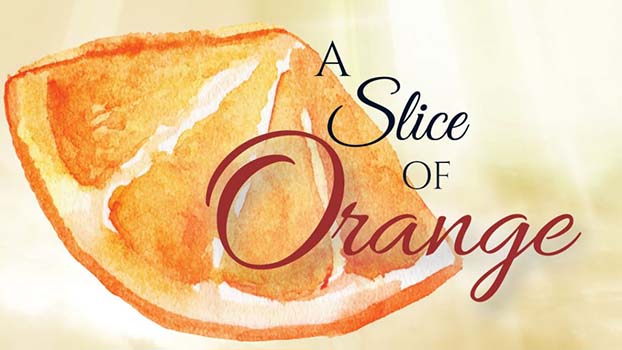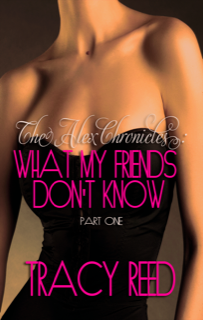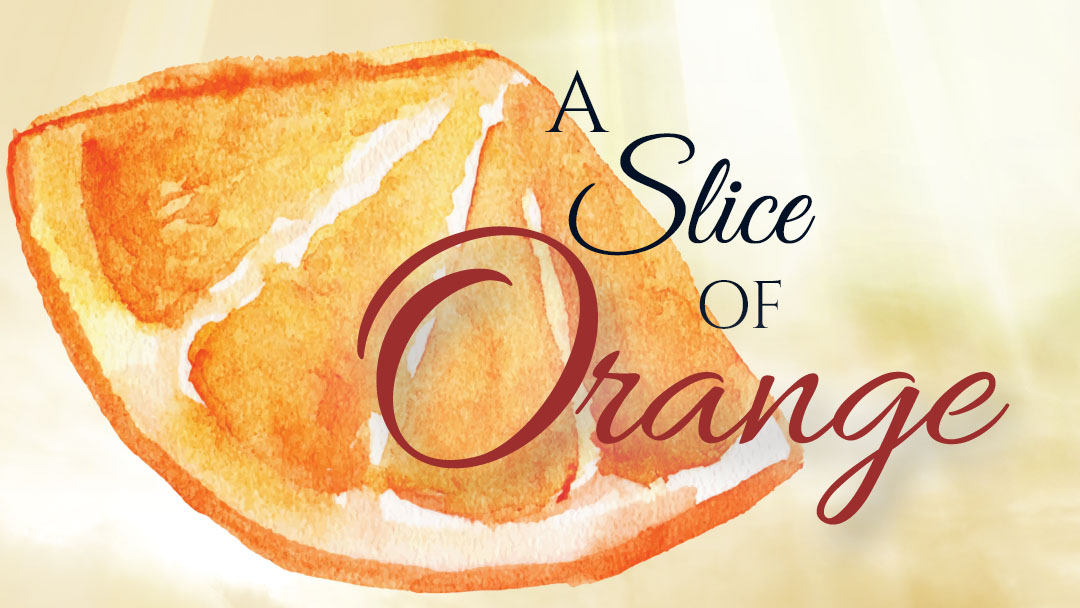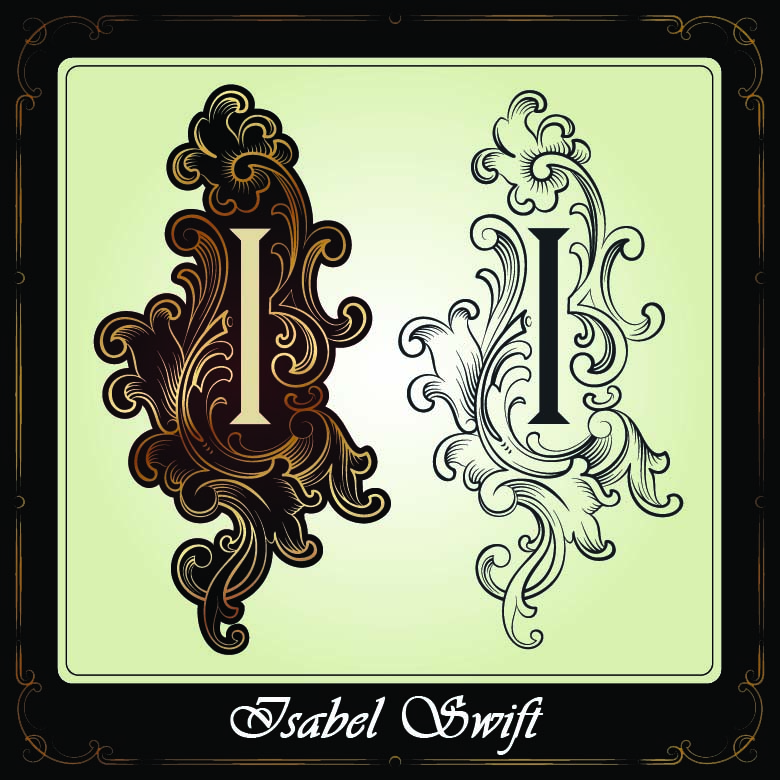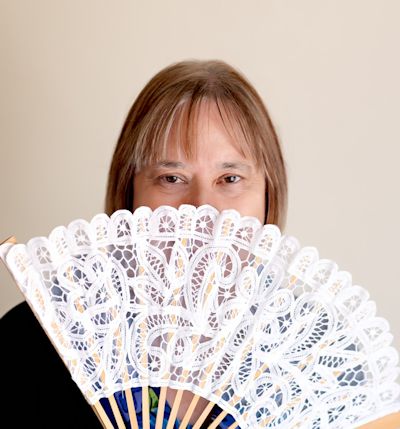Peeking into the Past
September 28, 2024 by Alina K. Field in category Quarter Days by Alina K. Field tagged as Alina K. Field, Historical Research, Quarter Days
One of the most enjoyable things about writing historical fiction is falling down the research rabbit hole.
Yes, I know authors of contemporary fiction have to do research also. Not disrespecting other writers. Just saying that historical research is, in my view, lots more interesting.
I especially like to read memoirs, and collections of letters. I have a couple of print books in my memoir collection, and more that I picked up from Google Books and Project Gutenberg. Though social norms and societal expectations might have changed, people’s wants and desires haven’t changed that much.
Another print book recently came into my collection, from my sister who was shuffling her collection of books for a cross-country move. It’s our grandmother’s geography text from her school days:

Old like Us
I’m up there in years, and as I was the second youngest of all the many grandchildren, this book is also old. In fact, it’s from the century before last. It was copyrighted in 1897, and that’s the year Grandma received it, inscribing it with her name and “her Book, Dec. 26, 1897.”
What I love is that, like a kid from my generation, the grandma who I knew as a very old, very proper octogenarian doodled and scribbled on the interior and exterior covers. In one place there are her initials in a pin-point design; in another, a penciled flower drawing; and a math problem when she maybe ran out of scrap paper.

And then there are these schoolgirl ditties from others:
Remember me early
Remember me late,
Remember me at
The Golden Gate
And this one:
Dear friend,
Love me little
Love me long
Love me when
I’m dead and gone
And:
These few lines are tendered
By a friend sincere and true
Hoping but to be remembered
By an honest friend like you
And this last:
Dear Sister
When on this page
you chance to look
remember it was
your sister that
wrote this in your book.
That one is rather poignant, because grandma’s sister died the following year.
A Budding School Teacher
Grandma was seventeen when she acquired this book, and she went on to become a country schoolteacher before marrying, having six children, and carrying out her share of the responsibilities of running the family farm–gardening, canning, cooking, cleaning, clothing everyone, etc. Her only water was pumped from a cistern, and she cooked on a wood stove. It makes me tired thinking about it!
Do you have any old treasures like this in your personal collection? Share in the comments, please!
Have a wonderful autumn, and I’ll see you at my next Quarter Days post.
1 2 Read more9 Authors, 9 Interconnected Stories
September 28, 2023 by Alina K. Field in category Quarter Days by Alina K. Field, Writing tagged as Alina K. Field, Bluestocking Belles, Quarter Days, Regency romance, Romance Collections
Under the Harvest Moon
We’re less than two weeks away from the release of the latest Bluestocking Belles collection of historical romances, Under the Harvest Moon.
All new original stories by authors Caroline Warfield, Jude Knight, Sherry Ewing, Cerise DeLand, Elizabeth Ellen Carter, Collette Cameron, Mary Lancaster, Rue Allyn, and me are set at harvest time in 1815, in the small fictional town of Reabridge in Cheshire, England.
Here’s the blurb:
As the village of Reabridge in Cheshire prepares for the first Harvest Festival following Waterloo, families are overjoyed to welcome back their loved ones from the war.
But excitement quickly turns to mystery when mere weeks before the festival, an orphaned child turns up in the town—a toddler born near Toulouse to an English mother who left clues that tie her to Reabridge.
With two prominent families feuding for generations and the central event of the Harvest Moon festival looming, tensions rise, and secrets begin to surface.
Nine award winning and bestselling authors have combined their talents to create this engaging and enchanting collection of interrelated tales. Under the Harvest Moon promises an unforgettable read for fans of Regency romance.

A Team Effort in Planning
The members of the Bluestocking Belles plus participating author friends Collette Cameron and Mary Lancaster are spread out all over the globe. Thank heavens for the wonders of social media, messaging, Google Drive, and Zoom that make communication and collaboration rapid and easy. Or at least easier!
The hardest aspect of organizing was finding a good time for a Zoom meeting that would accommodate Elizabeth in Australia, Jude in New Zealand, Mary in Scotland, Rue in Nicaragua, and the rest of us scattered over U.S. Eastern, Central, and Pacific time.
But we did it, and just about a year ago, after much preliminary research and chatting, we finalized our story world and deadlines as a group and then each presented ideas for the individual characters and stories. Later, we shared in beta-reading drafts and final copy before submission to Jude Knight (who is also an editor) for the final editing.
When a character wandered into another author’s story, the creating authors chatted separately. So, for example, my heroine, Fleur, encountered the heroine of Rue’s story, Charite, and offered a description through Fleur’s point of view that had to be adjusted after Rue’s critique and input. Caro’s doctor hero appears briefly in my story, in one scene with my hero, and later in a scene at the home where my heroine resides where he’s come to deliver a baby.
There’s more, yet each story is a standalone romance delivered in each author’s unique voice. You can preorder your copy for only 99 cents and have it pop onto your eReader on release day, October 10th.
The special pricing will be good through October 17th. Plus, if you haven’t read last year’s Bluestocking Belles collection, Desperate Daughters, you can pick up a copy of that for only 99 cents through October 4th!

And Here Are the Stories: Under the Harvest Moon
Moonlight Wishes and Midnight Kisses by Collette Cameron
A scarred veteran with no future, Courtland Marlow-Westbrook wants to be left alone. Scottish heiress Avery Levingtone never stopped loving him and is determined to win his love again. Will these former sweethearts find happiness together, or will the wounds of the past keep them apart?
The Morning Light by Caroline Warfield
Adam Wagner is meant to save lives, not take them. He is haunted by Waterloo. The horror of it keeps him from those he loves. Meg Barlow doesn’t understand how Adam could turn his back on her so thoroughly, but she isn’t about to let him get away with it.
A Harvest Blessing by Rue Allen
All the battles are over, or are they? When Captain Thom Owen is forced into a false engagement, he must escort his pseudo-fiancée home to meet his father. Can an English vicar’s son and a French Comte’s daughter find love despite their differences?
Coming Home by Mary Lancaster
Old memories, new love
Home from Waterloo, Captain David Buckley contemplates settling down near his hometown of Reabridge—only it is full of painful memories. The mysterious Lady Lorna falls literally into his arms, and he begin to understand the true meaning of love and home.
Under the Champagne Moon by Alina K Field
Fleur Hardouin’s heart longs for Captain Gareth Ardleigh, but she needs an advantageous marriage.
Gareth has promised to find Fleur—on behalf of another man.
Now he must choose between honoring a promise and trying to win the hand of the woman he loves.
A Quiet Heart by Elizabeth Ellen Carter
Widowed at Waterloo, where she also nursed the wounded, Veronica Petersham promised a dying man to bring his effects to a family in Reabridge. She falls ill just short of her goal, in the milking shed of kind and stoic Martin Bromelton.
Perhaps there is hope for the future after all and the opportunity to find love once more.
A Love Beyond Time by Sherry Ewing
Eight years ago, Hannah Pownall had her heart broken by a young lord.
Captain Brandon Worthington returns to the town of Reabridge to recover from the war and finds the girl he once loved still unwed. Can love at first sight be reborn after heartbreak, proving a second chance is all you need?
The Widow’s Harvest Hope by Cerise DeLand
The new Earl Barlow returns home from Waterloo, intending to live by his own rules. The woman he loved and lost years ago visits for the Harvest festival—and he plans to offer Vicky Wright what they both want. Can a lady who has lived by the rules throw them all away to seize her last chance for happiness?
Love In Its Season by Jude Knight
The Battle of Waterloo lost Jack Wrath the use of one arm and ended his career in the cavalry. He has no place to go and nothing to offer. Gwen Hughes has a business to run and no time for romance. Under the harvest moon, two people who believe romance has passed them by finally reach their season for love.
Buy links:
Amazon – https://www.amazon.com/dp/B0C86Q2Y4H
Apple Books – https://books.apple.com/us/book/under-the-harvest-moon/id6450278674
Kobo – https://www.kobo.com/us/en/ebook/under-the-harvest-moon-6
Goodreads – https://www.goodreads.com/book/show/178584368-under-the-harvest-moon
Universal Link: https://books2read.com/UnderHarvestMoon
Happy autumn! I’ll be back with another post in December.
0 0 Read moreMrs. Hurst Dancing, a Review
June 28, 2021 by Alina K. Field in category Quarter Days by Alina K. Field, Writing tagged as #ReadaRegency, Diana Sperling, Quarter Days, Regency Fashions, Regency romancePictures worth much more than a thousand words.

If you’re a fan of Jane Austen and other Regency-set fiction, Mrs. Hurst Dancing, a collection of 70 watercolors by Diana Sperling, is a treasure. The book is especially valuable for the often-confused author trying to envision the clothing, the transportation, and how everyone passed the time, especially in the country. Unfortunately, no one was posting helpful YouTube videos two hundred years ago.
The above painting is a good example of what you’ll find in the book. The tongue-in-cheek description is Sperling’s own. The “Lord of the Manor”, probably her brother Henry, leads three ladies (probably Diana and her sisters) to a neighbor’s house for a dinner party.
Staples of Country Life
All three ladies are wearing red cloaks, which I often forget were staples of country life, and also good indicators of class. The Sperling family were gentry, not super-rich nobility. The bonnets look like leghorn bonnets with flatter crowns. If you know what they are, please mention it in the comments.
Dinner in the country was earlier than in “town”. They’re not driving down the road to the neighbor’s in a coach and four–they’re walking cross-country! There’s no date on this picture, so we don’t know what season this is; probably not the dead of winter though, despite the cloaks. The three ladies are carrying their shoes for indoors, and it looks like Henry has his stuffed into the pocket of his coat. (Men’s pockets were in the tails of their coats.)
Hiking to Dinner
He’s also carrying a lantern for the walk home. No street lights in the country. Without our modern light pollution, imagine how dark it must have been?
And what about that “tremendous stile”? According to Merriam-Webster, a stile is “a step or set of steps for passing over a fence or wall”. Like this:

A stile allows people to pass, but not livestock. I don’t see stairs in Sperling’s drawing, but there does seem to be a space to the left. I hope the ladies don’t have to climb over those rails in their white gowns.
As I mentioned, there are seventy watercolors in the book depicting the country life of the gentry in this era. In one, Diana’s mother and the housekeeper stand on the window ledge “murdering flies”. In another, the ladies of the family are wallpapering a room. There’s a drawing of the family holding hands and experimenting with an “electrifying machine”. Horses, donkeys, dogs, chickens are all part of the country life depicted.

Mrs. Hurst Dancing is only available in hardcover, and is, I believe, out of print. Weirdly, Amazon has two entries for the book, one with used copies starting at $99, the other with used copies starting at $21.92. How wonderful if the copyright holder would release another edition of this book in softcover.
You can see a few more of Diana Sperling’s amazing watercolors on Pinterest.
For the authors and readers out there, do you make use of images to help you better “see” a story? What’s your go-to site?
Image credits:
The watercolor is from janeaustensworld.com via Pinterest; stile is from Wikimedia commons; book cover is from Amazon.com
2 0 Read moreQuarter Days: Happy Belated Lady Day
March 28, 2018 by Alina K. Field in category Quarter Days by Alina K. Field, Writing tagged as Feast of the Annunciation, Gregorian Calendar, Lady Day, Quarter DaysOr should I say, “Happy belated New Year”?
Greetings to my fellow history nerds. It’s time for another installment of my quarterly blog on historical topics.
In past posts, I talked about the English Quarter Days of Christmas, Midsummer’s Day and Michaelmas.
Lady Day
 To refresh your memory, Quarter Days were the four days during the year when rents were paid, servants hired, and contracts commenced. My Christmas blog inspired some comments about when New Year’s was celebrated. Marianne said:
To refresh your memory, Quarter Days were the four days during the year when rents were paid, servants hired, and contracts commenced. My Christmas blog inspired some comments about when New Year’s was celebrated. Marianne said:
“New Years used to be celebrated on the First Day of Spring. But when we changed from the Julian calendar to the Gregorian’s calendar, New Years change to January 1st. That’s why September, October, November and December are named the 7th, 8th, 9th and 10th months—even though they no longer are. While the Gregorian calendar was introduced in October 1582, we didn’t start using it until September 1752. April Fools were people who still celebrated the New Year in the Spring.”
In fact, that first day of spring on which the new year was celebrated was March 25th!
I mentioned before that most of the Quarter Days coincide with astronomical events (like the Vernal Equinox) and Pagan or Christian holidays. In the Catholic tradition which dominated most of Europe until the Reformation, March 25th is the Feast of the Annunciation, the date on which the Angel Gabriel visited the Virgin Mary. Thus it’s called Lady Day.
Why did the New Year’s Date Shift?
 I blogged a bit about the calendar changes in a 2016 Leap Day post. In short, the year began in January when the world ran on the Julian calendar (inaugurated by Julius Caesar) until 1582, when Pope Gregory introduced the Gregorian (what else would you call it?) calendar. With the implementation of the Gregorian calendar, countries adopting the calendar lost ten days.
I blogged a bit about the calendar changes in a 2016 Leap Day post. In short, the year began in January when the world ran on the Julian calendar (inaugurated by Julius Caesar) until 1582, when Pope Gregory introduced the Gregorian (what else would you call it?) calendar. With the implementation of the Gregorian calendar, countries adopting the calendar lost ten days.
Given that the calendar was devised by Catholics, England resisted and ran on the Julian calendar until 1752. Imagine subtracting ten days (or adding them) to line up your calendars. And vital statistic records, like births, deaths, and marriages? What a mess! As I mention in my 2016 post, George Washington’s birthday in 1732 was not February 22nd but February 11th.
Farming and Geese

A crowd chasing a goose. Wellcome Library
As the first day of spring, Lady Day was the most important Quarter Day for landholders and tenant farmers, and these contracts would run at least a full year to allow for the cycle of planting, cultivation and harvesting. Kathryn Kane has a thorough and well-researched post on this subject at her blog, The Regency Redingote.
Kathryn mentions that Lady Day apparently initiated goose-plucking season. Throughout the warmer months, quills (needed as writing implements) and down were harvested. And when the summer ended with Michaelmas, I seem to remember a feast of roast goose! Poor birds!
Weaving a Story
I know these are all little pieces of trivia, but as a historical romance author, I never know when I’ll be able to snag a detail or two to add to my story. Or maybe even craft a holiday-themed story, like I did with my latest release, A Leap Into Love, a Regency romance built around Leap Day traditions. I hope you too can find something useful here!
Happy spring! I’ll be back again in June for Midsummer’s Day.
Image credits: Wikimedia Commons
8 0 Read more
Quarter Days: Christmas
December 28, 2017 by Alina K. Field in category Columns tagged as Charles Dickens, Christmas, Oliver Cromwell, Quarter Days, Regency Christmas, The Man Who Invented ChristmasGreetings to my fellow history nerds. It’s time for another installment of my quarterly blog on historical topics.
In past posts, I talked about the English Quarter Days of Midsummer’s Day and Michaelmas.

Father Christmas with the Yule Log, 1848
To refresh your memory, Quarter Days were the four days during the year when rents were paid, servants hired, and contracts commenced. The last Quarter Day of the calendar year was the grand holiday of Christmas. Though the Quarter Day was December 25th, Christmas celebrations went on for twelve days.

Kissing under the Mistletoe
Christmas Romance
We romance authors flood the lists every year with Christmas novellas, and not just the contemporary lists. Christmas Regency romances abound and sell well. But how to get the details right for our hero and heroine? How did the Christmas celebrations aid or interfere with a Regency hero’s wooing? How did they celebrate Christmas?
Before the Regency
 As I pointed out in an earlier post, Christmas falls around the time of the winter solstice. The pagan festivities of the season were Bacchanalian revels of feasting and drinking and other wicked practices. To encourage some order, the early Christian church designated December 25th as a religious holiday.
As I pointed out in an earlier post, Christmas falls around the time of the winter solstice. The pagan festivities of the season were Bacchanalian revels of feasting and drinking and other wicked practices. To encourage some order, the early Christian church designated December 25th as a religious holiday.
So, people went to church…and then they feasted, drank, and engaged in other wicked practices.
Under the Puritan rule that resulted from the 17th century English Civil War, the observance of Christmas was banned. The Lord High Protector of England, Oliver Cromwell, and his Puritan cohorts decided that English people needed to be protected from carnal delights of holiday celebrations. Christmas became a regular workday. Anyone celebrating could be subject to penalty.
The Puritans carried this attitude across the Pond. Christmas was illegal in their American colonies also.
With the restoration to the throne of Charles II (a man greatly given to Bacchanalian revels), Christmas was also restored in the English calendar of holidays.
The Man Who Invented Christmas
 Christmas as we know it was documented by Charles Dickens, author of A Christmas Carol. I haven’t seen the movie yet, but I’ve dipped into the book by Les Standiford. In the story of Scrooge and Tiny Tim, Dickens brought to life the quintessential picture of a Victorian Christmas.
Christmas as we know it was documented by Charles Dickens, author of A Christmas Carol. I haven’t seen the movie yet, but I’ve dipped into the book by Les Standiford. In the story of Scrooge and Tiny Tim, Dickens brought to life the quintessential picture of a Victorian Christmas.
But if you’re writing a Regency-set Christmas romance, don’t pull out your copy of Dickens and copy his story world. To quote a post I wrote a couple of years ago:
Decorating with evergreen boughs and mistletoe (and kissing under the mistletoe!), wassailing, acting out pantomimes, and singing carols, were very likely part of the Regency holiday celebration…Christmas trees and Santa Claus did not become popular until Victorian times.
Click on the link to read the rest of that post.
A Visit from St. Nicholas
Or, as we know it, ‘Twas the Night Before Christmas, was written by an American, Clement Clarke Moore, in 1823. Dutch and German holiday traditions influenced the celebration of Christmas earlier in America than in England. Prince Albert, Victoria’s German prince, is credited with popularizing the Christmas tree in England.
Pictures worth a thousand words
Dickens brought us A Christmas Carol in 1843, but check out this series of illustrations by cartoonist George Cruikshanks. Even before Scrooge made his appearance, the early Victorians were holding over-the-top celebrations of the Twelve Days of Christmas.
No matter what holiday you celebrate, I wish you all the best in this season of holidays! I’ll be back in March to talk about Lady Day.
All Images courtesy of Wikimedia Commons
8 0 Read moreAffiliate Links
A Slice of Orange is an affiliate with some of the booksellers listed on this website, including Barnes & Nobel, Books A Million, iBooks, Kobo, and Smashwords. This means A Slice of Orange may earn a small advertising fee from sales made through the links used on this website. There are reminders of these affiliate links on the pages for individual books.
Search A Slice of Orange
Find a Column
Archives
Featured Books
DEEP INTO DUSK
In the second pulse-pounding thriller in the series, Detective Gabriel McRay is once again forced to face his inner demons
More info →SAVAGED DREAMS
How much will she risk for love? How far will he go for fame?
More info →A NAUGHTY CHRISTMAS CAROL
What if Scrooge was a tall, dark, and oh so sexy Wall Street billionaire?
More info →Newsletter
Contributing Authors
Search A Slice of Orange
Find a Column
Archives
Authors in the Bookstore
- A. E. Decker
- A. J. Scudiere
- A.J. Sidransky
- Abby Collette
- Alanna Lucus
- Albert Marrin
- Alice Duncan
- Alina K. Field
- Alison Green Myers
- Andi Lawrencovna
- Andrew C Raiford
- Angela Pryce
- Aviva Vaughn
- Barbara Ankrum
- Bethlehem Writers Group, LLC
- Carol L. Wright
- Celeste Barclay
- Christina Alexandra
- Christopher D. Ochs
- Claire Davon
- Claire Naden
- Courtnee Turner Hoyle
- Courtney Annicchiarico
- D. Lieber
- Daniel V. Meier Jr.
- Debra Dixon
- Debra H. Goldstein
- Debra Holland
- Dee Ann Palmer
- Denise M. Colby
- Diane Benefiel
- Diane Sismour
- Dianna Sinovic
- DT Krippene
- E.B. Dawson
- Emilie Dallaire
- Emily Brightwell
- Emily PW Murphy
- Fae Rowen
- Faith L. Justice
- Frances Amati
- Geralyn Corcillo
- Glynnis Campbell
- Greg Jolley
- H. O. Charles
- Jaclyn Roché
- Jacqueline Diamond
- Janet Lynn and Will Zeilinger
- Jaya Mehta
- Jeannine Atkins
- Jeff Baird
- Jenna Barwin
- Jenne Kern
- Jennifer D. Bokal
- Jennifer Lyon
- Jerome W. McFadden
- Jill Piscitello
- Jina Bacarr
- Jo A. Hiestand
- Jodi Bogert
- Jolina Petersheim
- Jonathan Maberry
- Joy Allyson
- Judy Duarte
- Justin Murphy
- Justine Davis
- Kat Martin
- Kidd Wadsworth
- Kitty Bucholtz
- Kristy Tate
- Larry Deibert
- Larry Hamilton
- Laura Drake
- Laurie Stevens
- Leslie Knowles
- Li-Ying Lundquist
- Linda Carroll-Bradd
- Linda Lappin
- Linda McLaughlin
- Linda O. Johnston
- Lisa Preston
- Lolo Paige
- Loran Holt
- Lynette M. Burrows
- Lyssa Kay Adams
- Madeline Ash
- Margarita Engle
- Marguerite Quantaine
- Marianne H. Donley
- Mary Castillo
- Maureen Klovers
- Megan Haskell
- Melanie Waterbury
- Melisa Rivero
- Melissa Chambers
- Melodie Winawer
- Meriam Wilhelm
- Mikel J. Wilson
- Mindy Neff
- Monica McCabe
- Nancy Brashear
- Neetu Malik
- Nikki Prince
- Once Upon Anthologies
- Paula Gail Benson
- Penny Reid
- Peter J Barbour
- Priscilla Oliveras
- R. H. Kohno
- Rachel Hailey
- Ralph Hieb
- Ramcy Diek
- Ransom Stephens
- Rebecca Forster
- Renae Wrich
- Roxy Matthews
- Ryder Hunte Clancy
- Sally Paradysz
- Sheila Colón-Bagley
- Simone de Muñoz
- Sophie Barnes
- Susan Kaye Quinn
- Susan Lynn Meyer
- Susan Squires
- T. D. Fox
- Tara C. Allred
- Tara Lain
- Tari Lynn Jewett
- Terri Osburn
- Tracy Reed
- Vera Jane Cook
- Vicki Crum
- Writing Something Romantic
Affiliate Links
A Slice of Orange is an affiliate with some of the booksellers listed on this website, including Barnes & Nobel, Books A Million, iBooks, Kobo, and Smashwords. This means A Slice of Orange may earn a small advertising fee from sales made through the links used on this website. There are reminders of these affiliate links on the pages for individual books.
